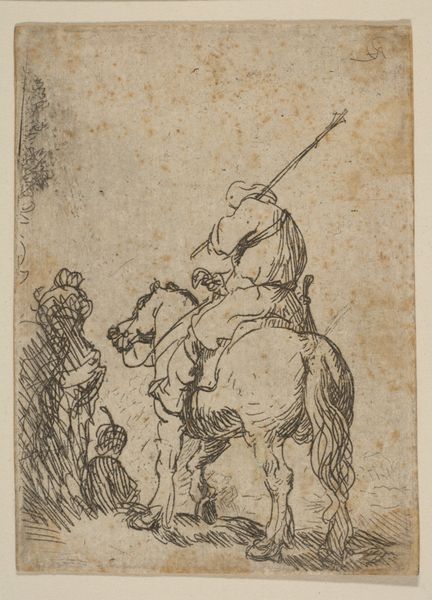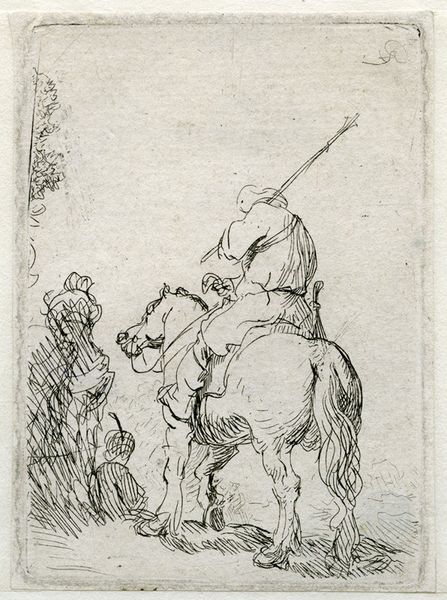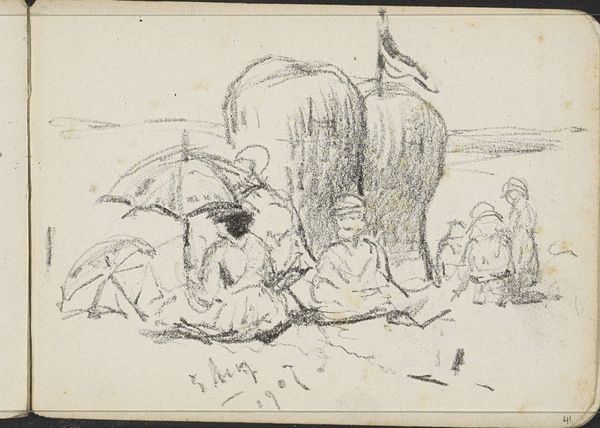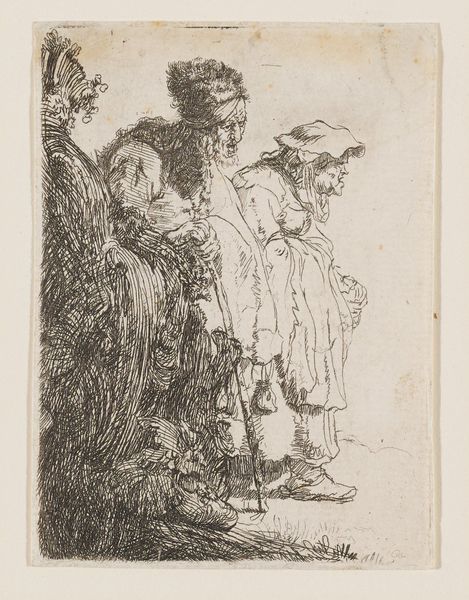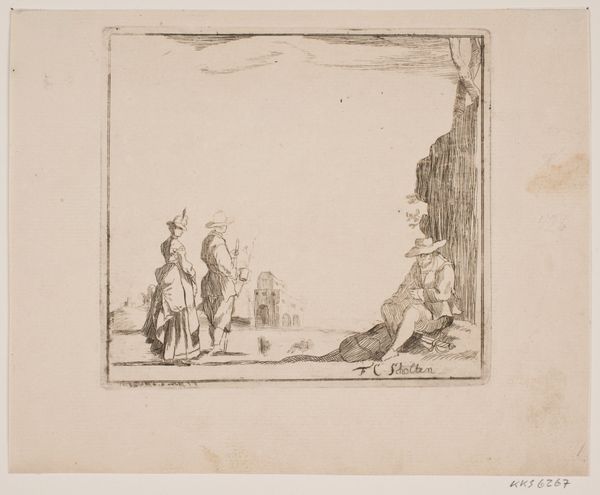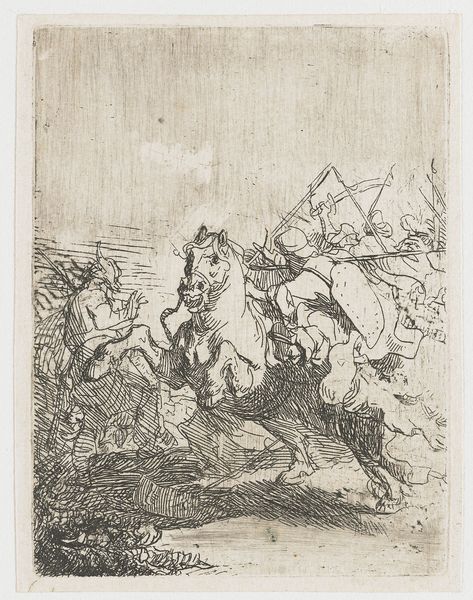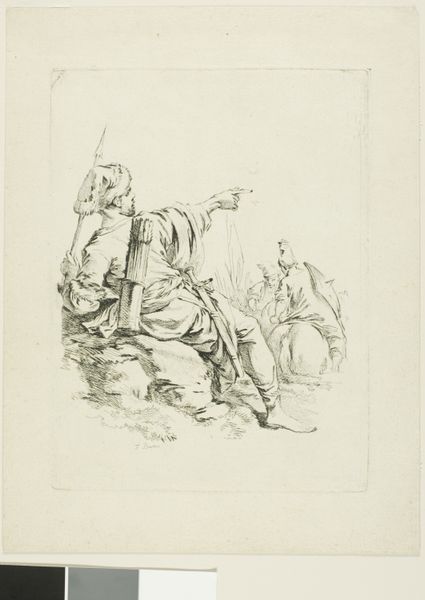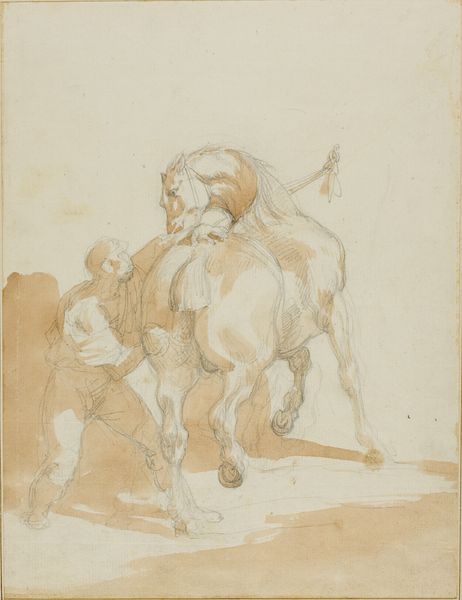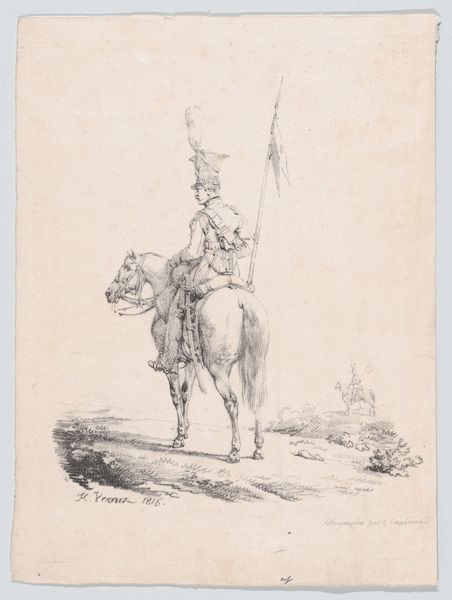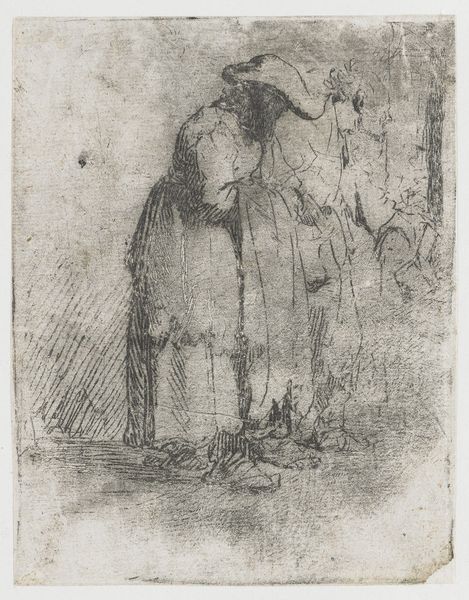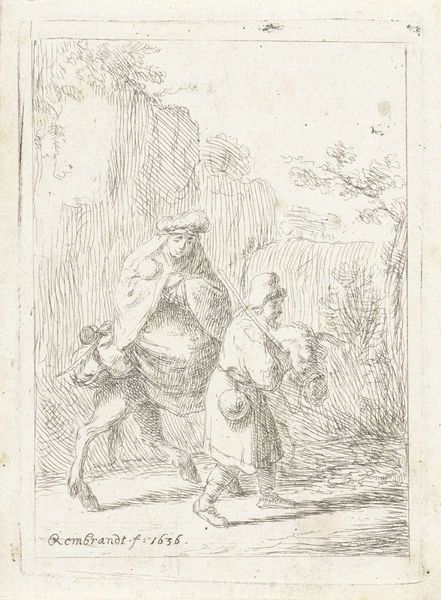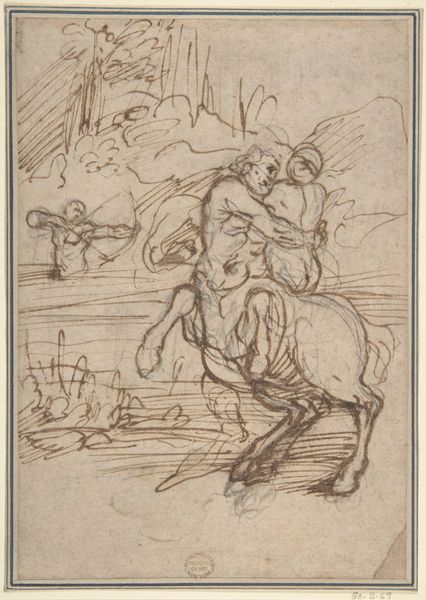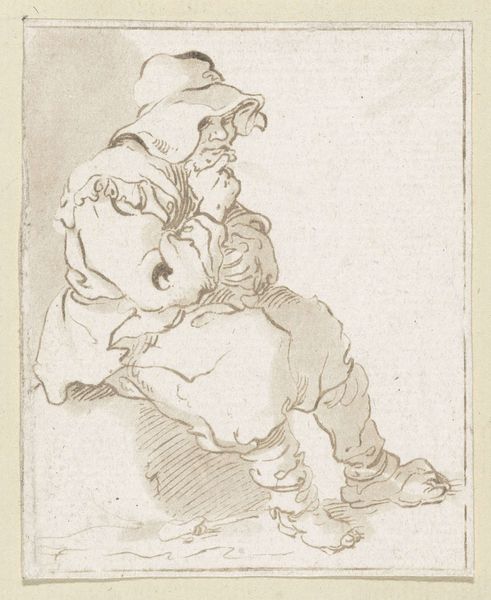
Dimensions: plate: 8.1 Ã 5.9 cm (3 3/16 Ã 2 5/16 in.) sheet: 8.3 Ã 6 cm (3 1/4 Ã 2 3/8 in.)
Copyright: CC0 1.0
Editor: This is Rembrandt van Rijn's etching, "The Turbaned Soldier on Horseback." I'm immediately struck by its small size and the loose, almost frantic linework. What narrative do you think Rembrandt is trying to convey here? Curator: Consider the cultural context of 17th-century Europe. Rembrandt was fascinated by the "Orient," often depicting figures in exotic clothing. This interest intersects with the Dutch Republic's colonial ambitions and the often romanticized, yet problematic, image of the "Other." Could this image, while seemingly just a study of a soldier, perpetuate a certain orientalist view? Editor: So, it's not just a portrait, but potentially part of a larger, more complicated cultural narrative? Curator: Precisely. Examining whose stories are being told, and how, helps us understand the power dynamics at play in art history. Editor: That makes me see it in a completely different light. Curator: It’s crucial to understand how art can reflect and reinforce societal biases. Editor: I'll definitely keep that in mind going forward. Thanks!
Comments
No comments
Be the first to comment and join the conversation on the ultimate creative platform.
